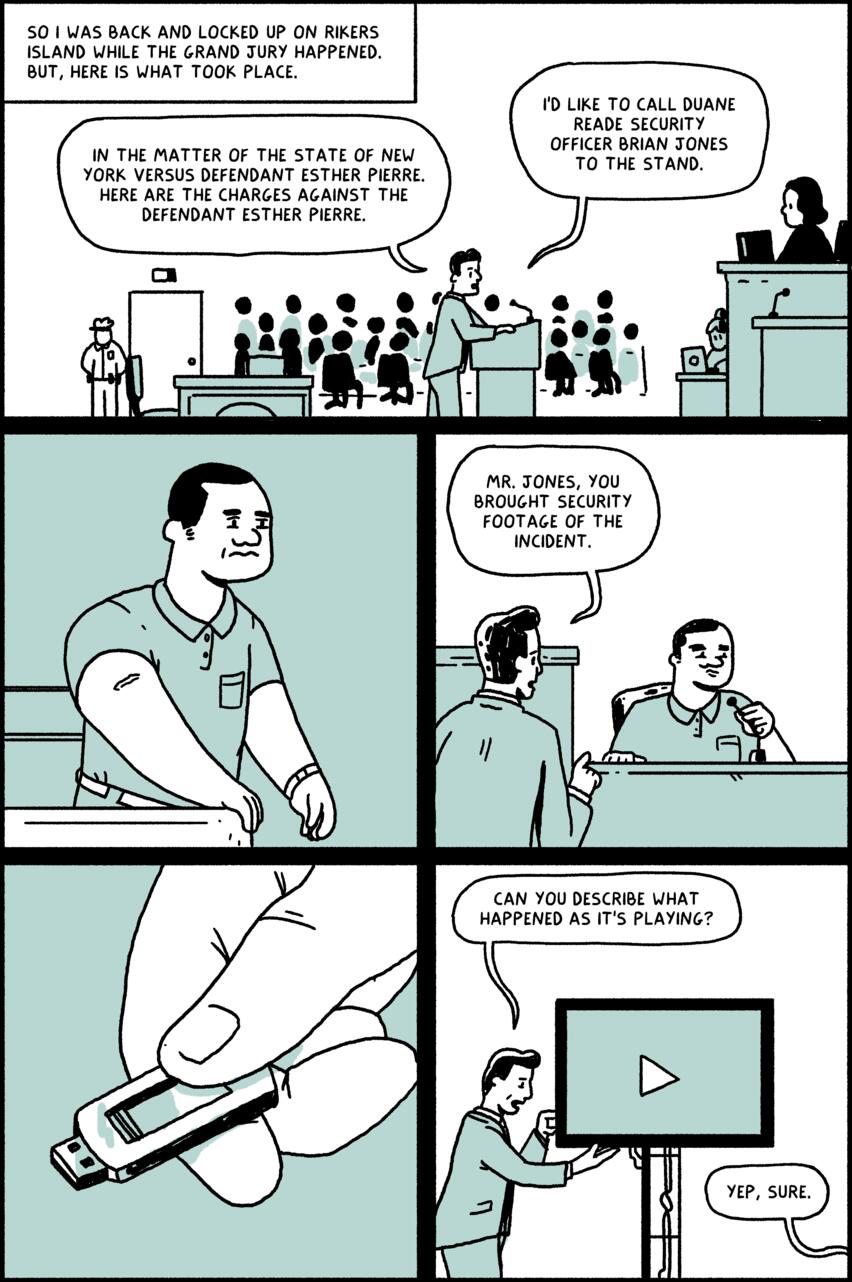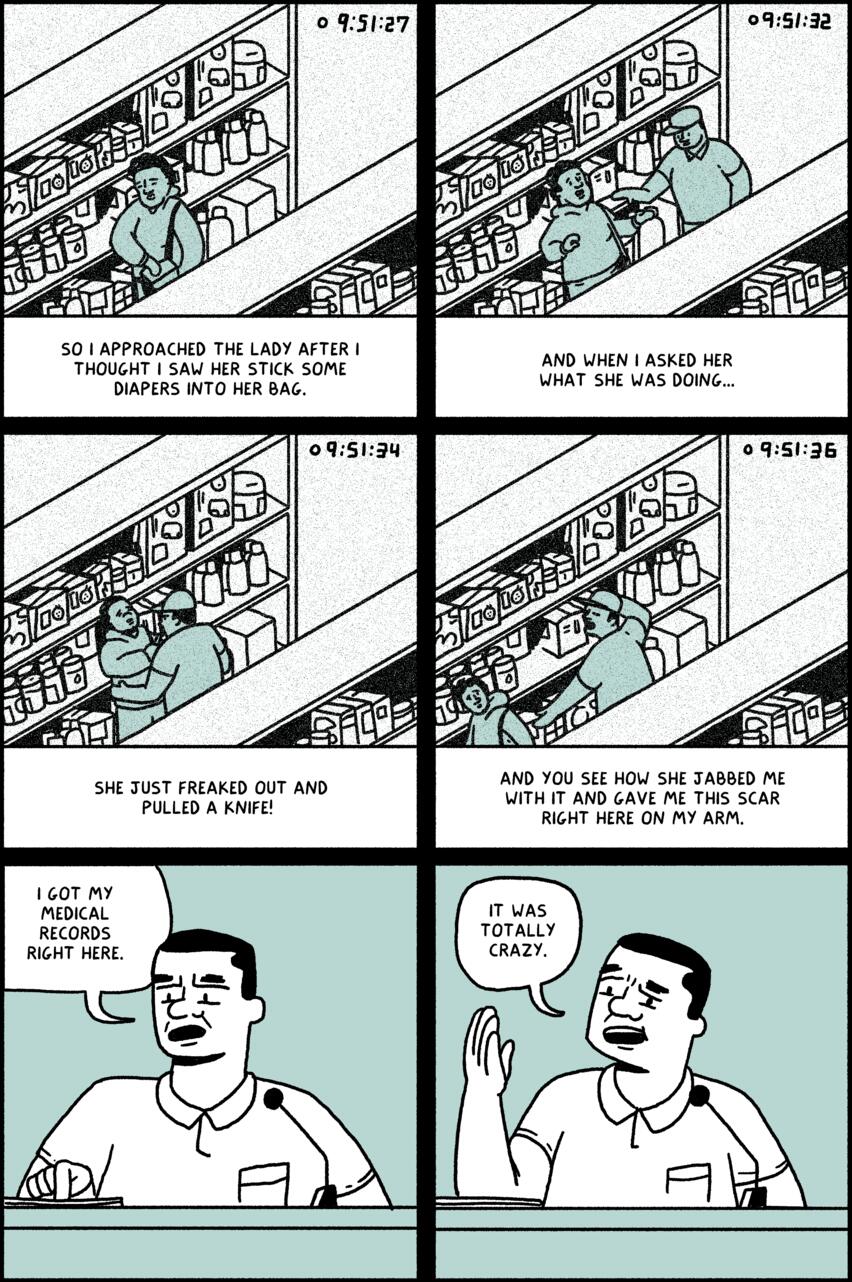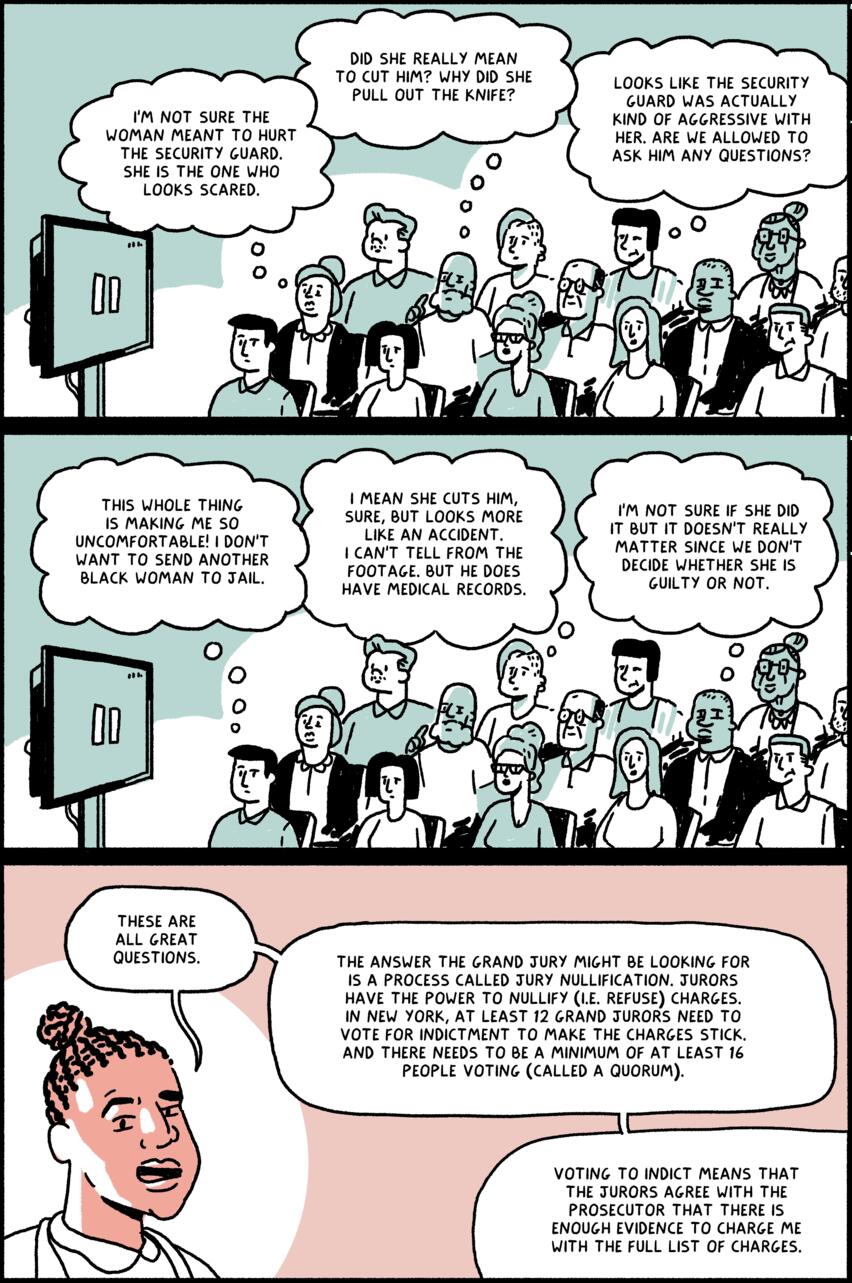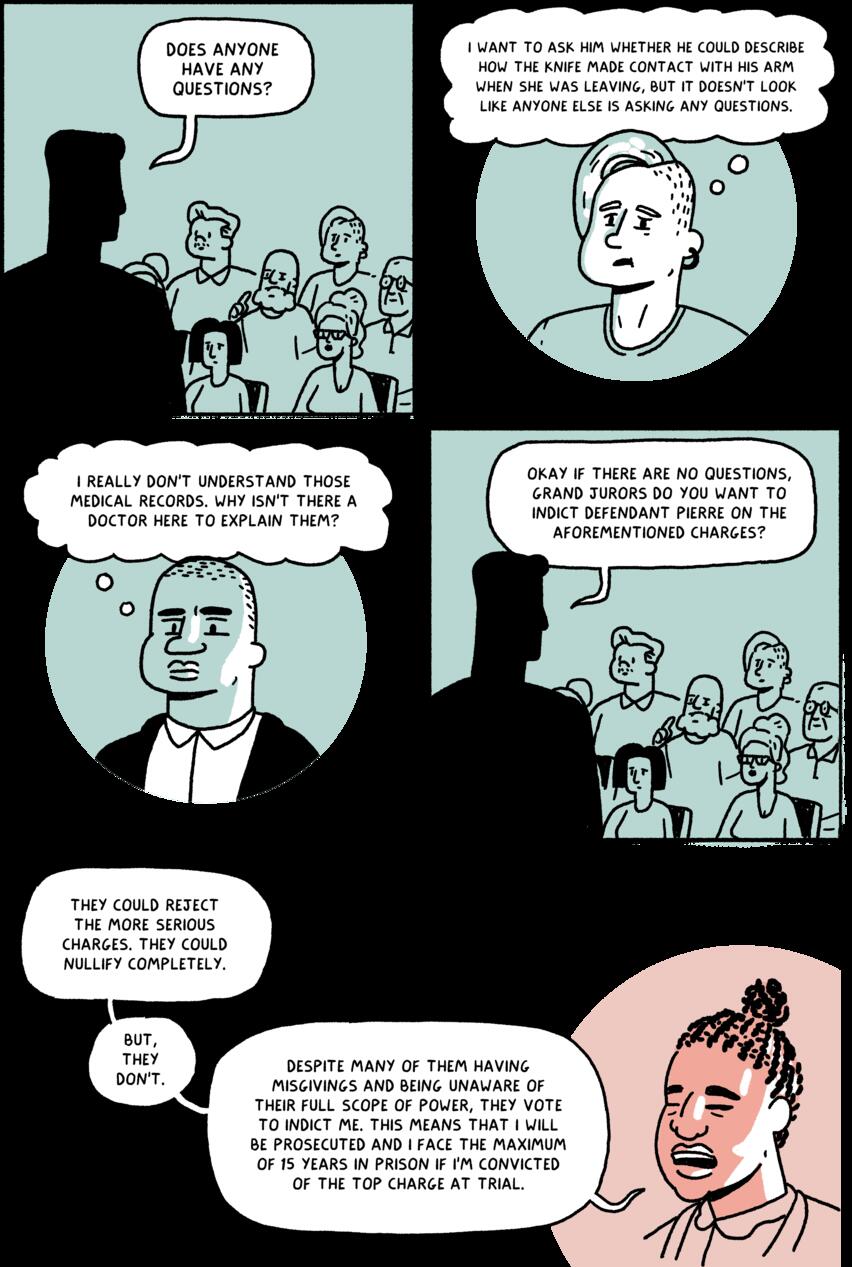Grand Jury
For more information on what happens during a grand jury, visit Criminal Court 101: Grand Jury / Preliminary Hearing.
The following section describes Esther’s experience during the grand jury phase of her case. Esther starts recounting what happened before and during the grand jury hearing. “I was only able to speak with Maya again when I was brought to court from Rikers on the first day that the grand jury met to deliberate over my case,” she remembers. “Most accused people do not testify at the grand jury and they and their lawyers are not even present to watch what happens. This was one of the most agonizing times in the case, and it wasn’t just for me. All of us were waiting for news of whether the grand jury would indict me.” Maya approaches Esther’s holding cell, waving in her direction. “Esther I’m so sorry, I only have an hour to speak with you before I need to get back to court. How are you holding up?” “Not great, obviously,” Esther says. “Do you have any news about my case?” The two are now face to face, and Esther grips the bars of the cell. Maya says: “The grand jury is now in session. We can expect the prosecutor will have the security guard and cop testify. I haven’t been able to get access to the video surveillance - Duane Reade won’t turn it over to me without a court-ordered subpoena - however, I do know they gave it to the prosecutor and he will probably show it in court.”
Maya continues: “One thing we need to decide today is whether you want to testify. This may sound odd, but my recommendation is that you do not testify.” Esther is shocked. “What? Why? I want to tell my side of the story!” “I know, I want you to as well,” Maya says. “But here is the thing: We don’t know what evidence they have against you or how they will present it. And if you testify I can’t intervene when the prosecutor asks you questions. I can’t even be there or ask my own questions. He’ll highlight the inconsistencies between your testimony and what other witnesses say or what the video shows. He’ll ask about your prior convictions to make you look untrustworthy.” As Maya explains, Esther lowers her head in acceptance. “It’s rigged,” Maya admits. There is a close-up panel of Esther’s face as she considers her lack of options. “I guess I don’t have much of a choice. I won’t testify.”
The scene shifts to the grand jury courtroom, where the prosecutor stands in front of a new judge. The judge is a middle-aged woman with mid-length, dark hair. But this is the prosecutor’s show, and the focus is rarely on the judge. In the background sit rows of jury members. Esther narrates: “So I was back and locked up on Rikers Island while the grand jury happened. But here is what took place.” The prosecutor begins, saying: “In the matter of The State of New York versus defendant Esther Pierre, here are the charges against the defendant. I’d like to call Duane Reade security officer Brian Jones to the stand.” The security guard from earlier stands and walks towards the witness stand. He settles into his seat and adjusts his microphone as the prosecutor approaches the stand. “Mr. Jones,” the prosecutor says, “you brought security footage of the incident.” A panel shows a USB thumbdrive in the guard’s hand. “Can you describe what happened as it’s playing?” the prosecutor asks, as he inserts the drive into a television set. “Yep, sure,” the guard responds.
Now, the video of the incident plays. The security footage is shot from a high angle, showing an aisle in the Downtown Brooklyn Duane Reade. The video is grainy. The first frame shows Esther putting diapers into her bag. The guard narrates how he remembers the incident. “So I approached the lady after I thought I saw her stick some diapers into her bag.” The next frame shows the guard approaching Esther from behind. Esther is surprised. “And when I asked her what she was doing…,” the guard continues, “She just freaked out and pulled a knife!” The third frame shows Esther leaned against the shelf with the security guard close to her. The knife is not clearly visible in the frame, nor is the action of Esther cutting the guard. The guard continues: And you see how she jabbed me with it and gave me this scar right here on my arm.” The last frame shows Esther escaping the guard’s grasp and running out of view of the camera. The tape ends and the scene shifts back to the guard on the witness stand. “I got my medical records right here,” he says, thumping a stack of paper with one finger. He raises his hand in disbelief, saying, “It was totally crazy.”
Now, the grand jury sits in rows, considering the footage they have just seen. There are various thought bubbles above their heads, with questions as to what exactly they saw and what they should do about it. Two panels cycle through their questions. Juror 1 thinks: “I’m not sure the woman meant to hurt the security guard. She is the one who looks scared.” Juror 2 asks: “Did she really mean to cut him? Why did she pull out the knife?” Juror 3 wonders: “Looks like the security guard was actually kind of aggressive with her. Are we allowed to ask him any questions?” Juror 4 thinks: “This whole thing is making me uncomfortable! I don’t want to send another black woman to jail.” Juror 5 thinks: “I mean she cuts him, sure, but looks more like an accident. I can’t tell from the footage. But he does have medical records.” And juror 6 wonders: “I’m not sure if she did it but it doesn’t really matter since we don’t decide whether she is guilty or not.” Esther, from the present, considers their doubts. “These are all great questions,” she says. “The answer the grand jury might be looking for is a process called jury nullification. Jurors have the power to nullify (i.e. refuse) charges. In New York, at least 12 grand jurors need to vote for indictment to make the charges stick. And there needs to be a minimum of at least 16 people voting (called a quorum). Voting to indict means that the jurors agree with the prosecutor that there is enough evidence to charge me with the full list of charges.”
Back in the courtroom, the prosecutor asks the grand jury: “Does anyone have any questions?” Again, jurors are confused. One juror, femme person with a side-buzzed haircut and earing, wonders: “I want to ask him whether he could describe how the knife made contact with his arm when she was leaving, but it doesn’t look like anyone else is asking any questions.” Another juror, a masculine, dark-skinned person in button down and blazer thinks: “I really don’t understand those medical records. Why isn’t there a doctor here to explain them?” But no questions are asked. The prosecutor continues: “Okay if there are no questions, grand jurors do you want to indict defendant Pierre on the aforementioned charges?” Esther’s narration interrupts and she explains: “They could reject the more serious charges. They could nullify completely. But they don’t. Despite many of them having misgivings and being unaware of their full scope of power, they vote to indict me. This means that I will be prosecuted and I face the maximum 15 years in prison if I’m convicted of the top charge at trial.” The Grand Jury section of Esther’s Story ends here.





